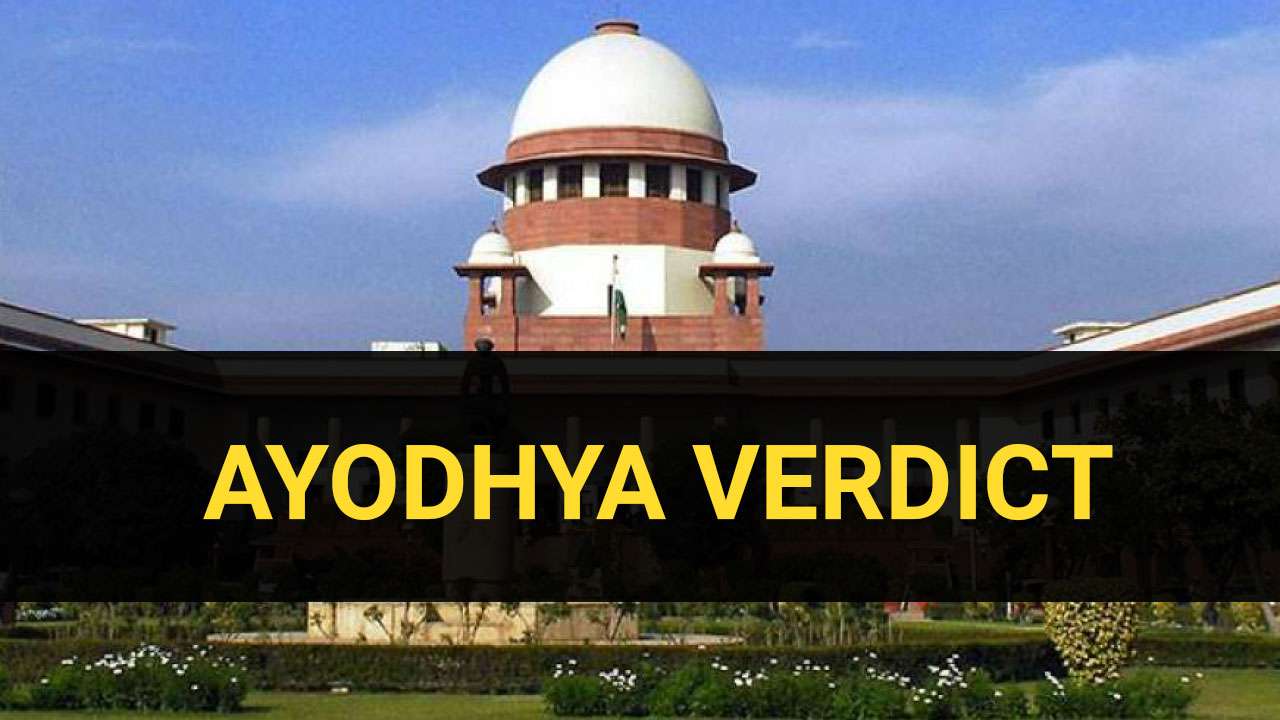M Siddiq (D) Thr Lrs …Appellants
Versus
Mahant Suresh Das & Ors …Respondents
5-judge Constitution bench delivered the judgement comprising Chief Justice Ranjan Gogoi and Justices S A Bobde, D Y Chandrachud, Ashok Bhushan and S Abdul Nazeer.


Background of the case and Facts
This judgment centre around a dispute between two religious communities both of whom claim ownership over a piece of land admeasuring 1500 square yards in the town of Ayodhya. The disputed property is of immense significance to Hindus and Muslims. The Hindu community claims it as the birthplace of Lord Ram, an incarnation of Lord Vishnu. The Muslim community claims it as the site of the historic Babri Masjid built by the first Mughal Emperor, Babur.The Hindus refer
to the disputed site as Ram Janmabhumi or Ram Janmasthan (i.e. birth-place of
Lord Ram). The Hindus assert that there existed at the disputed site an ancient
temple dedicated to Lord Ram, which was demolished upon the conquest of the
Indian sub-continent by Mughal Emperor Babur. On the other hand, the Muslims
contended that the mosque was built by or at the behest of Babur on vacant
land. Though the significance of the site for the Hindus is not denied, it is
the case of the Muslims that there exists no proprietary claim of the Hindus
over the disputed property.
The Uttar
Pradesh Sunni Central Board of Waqf (Sunni Central Waqf Board) and other
Muslim residents of Ayodhya instituted a suit in 1961 for a declaration of
their title to the disputed site. According to them, the old structure was a the mosque which was built on the instructions of Emperor Babur by Mir Baqi who was
the Commander of his forces, following the conquest of the subcontinent by the
Mughal Emperor in the third decade of the sixteenth century.
The Muslims deny
that the mosque was constructed on the site of a destroyed temple. According to
them, prayers were uninterruptedly offered in the mosque until 23 December 1949
when a group of Hindus desecrated it by placing idols within the precincts of
its three-domed structure with the intent to destroy, damage and defile the
Islamic religious structure.
The High Court Verdict
A suit was
instituted in 1989 by a next friend on behalf of the deity (―Bhagwan Shri Ram
Virajman) and the birth-place of Lord Ram (―Asthan Shri Ram Janmabhumi).These
suits, together with a separate suit by Hindu worshippers were transferred by
the Allahabad High Court to itself for trial from the civil court at Faizabad.
The High Court rendered a judgment in original proceedings arising out of the
four suits and these appeals arise out of the decision of a Full Bench dated 30
September 2010. The High Court held that the suits filed by the Sunni Central
Waqf Board and by Nirmohi Akhara were barred by limitation. Despite having held
that those two suits were barred by time, the High Court held in a split 2:1
verdict that the Hindu and Muslim parties were joint holders of the disputed
premises. Each of them was held entitled to one third of the disputed property.
The Nirmohi Akhara was granted the remaining one third.
Highlights of Present Case before the Supreme Court
Whereas Supreme Court on 9th November delivered a Judgement putting an end to the above dispute and reversing the order of Allahabad High Court and granting the disputed land in favour of Temple. The followings are highlights of the verdict-
Temple on disputed site, Alternative land
for mosque-
The Supreme Court granted the entire disputed land
in Ayodhya for temple construction. SC directed Centre and UP govt to
allot 5 acres of land to Muslims at a prominent place in Ayodhya for building a
mosque.
Trust to be formed within 3 months for temple construction-
The court has asked Centre to
consider granting some kind of representation to Nirmohi Akhara in setting up
of trust
and directed the Centre to formulate a scheme for forming a trust within 3
months for construction of a temple at the site at the disputed site where Babri Masjid was demolished in 1992.
Juristic Personality-
The Ram Janmabhoomi has no juristic personality.
But Ram Lalla, the deity has juristic personality.
Limitation-
Section
3 of the Limitation Act 1908 provides that every suit instituted after the
period of limitation shall be dismissed. The Supreme Court can dispose of
appeals only on the ground of limitation. Suit 3 instituted by Nirmohi Akhara
is barred by limitation. The Suit by
Sunni Waqf Board is maintainable and not barred by limitation Ramlalla Virajman suit is within the limitation period.
Shebait-
SC held that Nirmohi Akhara is not the shebait.
Also said Ramjanmabhoomi is not a juristic person
Archeological Survey and Confirmations-
Court confirmed that there was a structure below the Mosque. Babri Mosque not constructed in vacant land, there was an
underlying structure. But ASI failed to confirm the existence of a temple.
Whose Title-
The title cannot be established
only by faith and belief. Value of secular constitution lies in the principle
of deference. Adjudication of the title has to be based on evidence
maintainable in a court of law. The title cannot be established on ground of faith, belief; they are kind of indicator for deciding dispute
Damage to Babri was a violation of the law-
Muslim were deprived of the possession of the
mosque by forcible desecration.









0 Comments